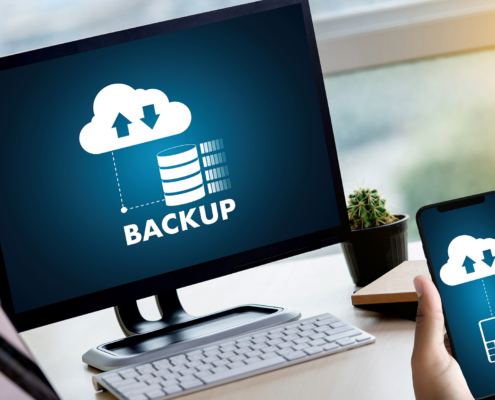Blog
Follow the NIC blog to keep up with the latest news, trends, and cutting-edge insights in information technology.
Follow the NIC blog to keep up with the latest news, trends, and cutting-edge insights in information technology.

 https://www.nicitpartner.com/wp-content/uploads/2025/06/IT-team-looking-at-computer-monitor.jpg
1250
2000
Abstrakt Marketing
/wp-content/uploads/2024/09/main-logo-300x131.png
Abstrakt Marketing2025-06-23 14:02:582025-06-30 07:17:11When to Upgrade Your IT Support and Other Tips You Need to Know
https://www.nicitpartner.com/wp-content/uploads/2025/06/IT-team-looking-at-computer-monitor.jpg
1250
2000
Abstrakt Marketing
/wp-content/uploads/2024/09/main-logo-300x131.png
Abstrakt Marketing2025-06-23 14:02:582025-06-30 07:17:11When to Upgrade Your IT Support and Other Tips You Need to Know https://www.nicitpartner.com/wp-content/uploads/2025/06/The-Costs-of-Poor-Outsourced-IT-Support.jpg
1250
2000
Abstrakt Marketing
/wp-content/uploads/2024/09/main-logo-300x131.png
Abstrakt Marketing2025-06-11 07:29:302025-06-30 07:17:11The Costs of Poor Outsourced IT Support
https://www.nicitpartner.com/wp-content/uploads/2025/06/The-Costs-of-Poor-Outsourced-IT-Support.jpg
1250
2000
Abstrakt Marketing
/wp-content/uploads/2024/09/main-logo-300x131.png
Abstrakt Marketing2025-06-11 07:29:302025-06-30 07:17:11The Costs of Poor Outsourced IT Support https://www.nicitpartner.com/wp-content/uploads/2025/06/The-Benefits-of-247-IT-Support-nic.jpg
1250
2000
Abstrakt Marketing
/wp-content/uploads/2024/09/main-logo-300x131.png
Abstrakt Marketing2025-06-11 07:19:452025-06-30 07:17:11The Benefits of 24/7 IT Support
https://www.nicitpartner.com/wp-content/uploads/2025/06/The-Benefits-of-247-IT-Support-nic.jpg
1250
2000
Abstrakt Marketing
/wp-content/uploads/2024/09/main-logo-300x131.png
Abstrakt Marketing2025-06-11 07:19:452025-06-30 07:17:11The Benefits of 24/7 IT Support https://www.nicitpartner.com/wp-content/uploads/2025/06/The-Correlation-Between-IT-Support-Response-Times-and-Productivity.jpg
1250
2000
Abstrakt Marketing
/wp-content/uploads/2024/09/main-logo-300x131.png
Abstrakt Marketing2025-06-11 07:10:522025-06-30 07:17:11The Correlation Between IT Support Response Times and Productivity
https://www.nicitpartner.com/wp-content/uploads/2025/06/The-Correlation-Between-IT-Support-Response-Times-and-Productivity.jpg
1250
2000
Abstrakt Marketing
/wp-content/uploads/2024/09/main-logo-300x131.png
Abstrakt Marketing2025-06-11 07:10:522025-06-30 07:17:11The Correlation Between IT Support Response Times and Productivity https://www.nicitpartner.com/wp-content/uploads/2025/05/What-Is-Zero-Trust-Security-and-Why-Does-Your-Business-Need-It_.jpg
1250
2000
Abstrakt Marketing
/wp-content/uploads/2024/09/main-logo-300x131.png
Abstrakt Marketing2025-05-01 13:57:242025-06-30 07:17:12What is Zero Trust Security, and Why Does Your Business Need It?
https://www.nicitpartner.com/wp-content/uploads/2025/05/What-Is-Zero-Trust-Security-and-Why-Does-Your-Business-Need-It_.jpg
1250
2000
Abstrakt Marketing
/wp-content/uploads/2024/09/main-logo-300x131.png
Abstrakt Marketing2025-05-01 13:57:242025-06-30 07:17:12What is Zero Trust Security, and Why Does Your Business Need It? https://www.nicitpartner.com/wp-content/uploads/2025/05/5-Common-Mistakes-Businesses-Make-When-Creating-a-Disaster-Recovery-Plan.jpg
1250
2000
Abstrakt Marketing
/wp-content/uploads/2024/09/main-logo-300x131.png
Abstrakt Marketing2025-05-01 13:46:522025-06-30 07:17:125 Common Mistakes Businesses Make When Creating a Disaster Recovery Plan
https://www.nicitpartner.com/wp-content/uploads/2025/05/5-Common-Mistakes-Businesses-Make-When-Creating-a-Disaster-Recovery-Plan.jpg
1250
2000
Abstrakt Marketing
/wp-content/uploads/2024/09/main-logo-300x131.png
Abstrakt Marketing2025-05-01 13:46:522025-06-30 07:17:125 Common Mistakes Businesses Make When Creating a Disaster Recovery Plan https://www.nicitpartner.com/wp-content/uploads/2025/04/The-Importance-of-Multi-Factor-Authentication.jpg
1250
2000
Abstrakt Marketing
/wp-content/uploads/2024/09/main-logo-300x131.png
Abstrakt Marketing2025-04-28 12:40:392025-06-30 07:17:12The Importance of Multi-Factor Authentication
https://www.nicitpartner.com/wp-content/uploads/2025/04/The-Importance-of-Multi-Factor-Authentication.jpg
1250
2000
Abstrakt Marketing
/wp-content/uploads/2024/09/main-logo-300x131.png
Abstrakt Marketing2025-04-28 12:40:392025-06-30 07:17:12The Importance of Multi-Factor Authentication https://www.nicitpartner.com/wp-content/uploads/2025/04/Front-view-of-computer-and-phone-screens-cloud-backup.jpg
1250
2000
Abstrakt Marketing
/wp-content/uploads/2024/09/main-logo-300x131.png
Abstrakt Marketing2025-04-02 09:33:152025-06-30 07:17:12The Role of Cloud Backup in Disaster Recovery
https://www.nicitpartner.com/wp-content/uploads/2025/04/Front-view-of-computer-and-phone-screens-cloud-backup.jpg
1250
2000
Abstrakt Marketing
/wp-content/uploads/2024/09/main-logo-300x131.png
Abstrakt Marketing2025-04-02 09:33:152025-06-30 07:17:12The Role of Cloud Backup in Disaster Recovery https://www.nicitpartner.com/wp-content/uploads/2025/04/Phishing-and-internet-security-concept-man-and-warning-on-phone.jpg
1250
2000
Abstrakt Marketing
/wp-content/uploads/2024/09/main-logo-300x131.png
Abstrakt Marketing2025-04-02 09:27:512025-06-30 07:17:12Phishing Attack Prevention Strategies You Need to Know
https://www.nicitpartner.com/wp-content/uploads/2025/04/Phishing-and-internet-security-concept-man-and-warning-on-phone.jpg
1250
2000
Abstrakt Marketing
/wp-content/uploads/2024/09/main-logo-300x131.png
Abstrakt Marketing2025-04-02 09:27:512025-06-30 07:17:12Phishing Attack Prevention Strategies You Need to Know https://www.nicitpartner.com/wp-content/uploads/2025/04/Computer-scientist-doing-disaster-recovery-planning-and-security-protocol-enforcement-in-data-center.jpg
1250
2000
Abstrakt Marketing
/wp-content/uploads/2024/09/main-logo-300x131.png
Abstrakt Marketing2025-04-02 09:21:072025-06-30 07:17:12How to Handle Disaster Recovery After Data Loss
https://www.nicitpartner.com/wp-content/uploads/2025/04/Computer-scientist-doing-disaster-recovery-planning-and-security-protocol-enforcement-in-data-center.jpg
1250
2000
Abstrakt Marketing
/wp-content/uploads/2024/09/main-logo-300x131.png
Abstrakt Marketing2025-04-02 09:21:072025-06-30 07:17:12How to Handle Disaster Recovery After Data Loss https://www.nicitpartner.com/wp-content/uploads/2025/03/Military-woman-and-hand-typing-with-tablet-in-communication.jpg
1250
2000
Abstrakt Marketing
/wp-content/uploads/2024/09/main-logo-300x131.png
Abstrakt Marketing2025-03-03 10:16:302025-06-30 07:17:13The Importance of Cloud Computing in the Defense Industry
https://www.nicitpartner.com/wp-content/uploads/2025/03/Military-woman-and-hand-typing-with-tablet-in-communication.jpg
1250
2000
Abstrakt Marketing
/wp-content/uploads/2024/09/main-logo-300x131.png
Abstrakt Marketing2025-03-03 10:16:302025-06-30 07:17:13The Importance of Cloud Computing in the Defense Industry https://www.nicitpartner.com/wp-content/uploads/2025/03/Team-of-smiling-multiracial-crew-of-skilled-IT-professionals-enjoying-cooperation.jpg
1250
2000
Abstrakt Marketing
/wp-content/uploads/2024/09/main-logo-300x131.png
Abstrakt Marketing2025-03-03 10:06:392025-06-30 07:17:13The Importance of Non-Profit IT Services
https://www.nicitpartner.com/wp-content/uploads/2025/03/Team-of-smiling-multiracial-crew-of-skilled-IT-professionals-enjoying-cooperation.jpg
1250
2000
Abstrakt Marketing
/wp-content/uploads/2024/09/main-logo-300x131.png
Abstrakt Marketing2025-03-03 10:06:392025-06-30 07:17:13The Importance of Non-Profit IT Services https://www.nicitpartner.com/wp-content/uploads/2024/11/Whats-the-Optimal-Recommended-Backup-Storage-Strategy-2.jpg
1250
2000
Abstrakt Marketing
/wp-content/uploads/2024/09/main-logo-300x131.png
Abstrakt Marketing2024-11-20 12:05:472025-06-30 07:17:13What’s the Optimal Recommended Backup Storage Strategy?
https://www.nicitpartner.com/wp-content/uploads/2024/11/Whats-the-Optimal-Recommended-Backup-Storage-Strategy-2.jpg
1250
2000
Abstrakt Marketing
/wp-content/uploads/2024/09/main-logo-300x131.png
Abstrakt Marketing2024-11-20 12:05:472025-06-30 07:17:13What’s the Optimal Recommended Backup Storage Strategy? https://www.nicitpartner.com/wp-content/uploads/2024/11/Front-view-of-man-examining-smart-tablet.jpg
1250
2000
Abstrakt Marketing
/wp-content/uploads/2024/09/main-logo-300x131.png
Abstrakt Marketing2024-11-20 09:55:032025-06-30 07:17:13What You Need to Know to Ensure NIST Compliance
https://www.nicitpartner.com/wp-content/uploads/2024/11/Front-view-of-man-examining-smart-tablet.jpg
1250
2000
Abstrakt Marketing
/wp-content/uploads/2024/09/main-logo-300x131.png
Abstrakt Marketing2024-11-20 09:55:032025-06-30 07:17:13What You Need to Know to Ensure NIST Compliance https://www.nicitpartner.com/wp-content/uploads/2024/11/Panoramic-view-of-the-bustling-downtown-in-Salt-Lake-City-Utah.jpg
1250
2000
Abstrakt Marketing
/wp-content/uploads/2024/09/main-logo-300x131.png
Abstrakt Marketing2024-11-18 08:58:272025-06-30 07:17:13NIC Acquires Applied Integration and Expands to Salt Lake City
https://www.nicitpartner.com/wp-content/uploads/2024/11/Panoramic-view-of-the-bustling-downtown-in-Salt-Lake-City-Utah.jpg
1250
2000
Abstrakt Marketing
/wp-content/uploads/2024/09/main-logo-300x131.png
Abstrakt Marketing2024-11-18 08:58:272025-06-30 07:17:13NIC Acquires Applied Integration and Expands to Salt Lake City https://www.nicitpartner.com/wp-content/uploads/2024/11/Desk-startup-and-person-with-clipboard-in-office.jpg
1250
2000
Abstrakt Marketing
/wp-content/uploads/2024/09/main-logo-300x131.png
Abstrakt Marketing2024-11-12 08:21:182025-06-30 07:17:13Cyber Security Examination Checklist
https://www.nicitpartner.com/wp-content/uploads/2024/11/Desk-startup-and-person-with-clipboard-in-office.jpg
1250
2000
Abstrakt Marketing
/wp-content/uploads/2024/09/main-logo-300x131.png
Abstrakt Marketing2024-11-12 08:21:182025-06-30 07:17:13Cyber Security Examination Checklist https://www.nicitpartner.com/wp-content/uploads/2024/11/Person-typing-on-laptop-keyboard-businessman-working-on-laptop.jpg
1250
2000
Abstrakt Marketing
/wp-content/uploads/2024/09/main-logo-300x131.png
Abstrakt Marketing2024-11-12 08:12:212025-06-30 07:17:13Our Best Practices For Cyber Security
https://www.nicitpartner.com/wp-content/uploads/2024/11/Person-typing-on-laptop-keyboard-businessman-working-on-laptop.jpg
1250
2000
Abstrakt Marketing
/wp-content/uploads/2024/09/main-logo-300x131.png
Abstrakt Marketing2024-11-12 08:12:212025-06-30 07:17:13Our Best Practices For Cyber Security https://www.nicitpartner.com/wp-content/uploads/2024/11/Information-technology-support-tips-for-small-business.jpg
1250
2000
Paul Cook
/wp-content/uploads/2024/09/main-logo-300x131.png
Paul Cook2024-09-30 13:31:542025-06-30 07:17:14Helpful Information Technology Support Tips for Small Businesses
https://www.nicitpartner.com/wp-content/uploads/2024/11/Information-technology-support-tips-for-small-business.jpg
1250
2000
Paul Cook
/wp-content/uploads/2024/09/main-logo-300x131.png
Paul Cook2024-09-30 13:31:542025-06-30 07:17:14Helpful Information Technology Support Tips for Small Businesses https://www.nicitpartner.com/wp-content/uploads/2024/11/How-Backup-Disaster-Recovery-Solutions-Can-Benefit-Your-Business.jpg
1250
2000
Paul Cook
/wp-content/uploads/2024/09/main-logo-300x131.png
Paul Cook2024-08-08 18:30:482025-06-30 07:17:14How Backup Disaster Recovery Solutions Can Benefit Your Business
https://www.nicitpartner.com/wp-content/uploads/2024/11/How-Backup-Disaster-Recovery-Solutions-Can-Benefit-Your-Business.jpg
1250
2000
Paul Cook
/wp-content/uploads/2024/09/main-logo-300x131.png
Paul Cook2024-08-08 18:30:482025-06-30 07:17:14How Backup Disaster Recovery Solutions Can Benefit Your Business https://www.nicitpartner.com/wp-content/uploads/2024/11/Business-person-in-office-using-secure-laptop.jpg
1250
2000
Paul Cook
/wp-content/uploads/2024/09/main-logo-300x131.png
Paul Cook2024-07-16 19:15:272025-06-30 07:17:14Network Security or Cybersecurity—What’s Best for Your Business?
https://www.nicitpartner.com/wp-content/uploads/2024/11/Business-person-in-office-using-secure-laptop.jpg
1250
2000
Paul Cook
/wp-content/uploads/2024/09/main-logo-300x131.png
Paul Cook2024-07-16 19:15:272025-06-30 07:17:14Network Security or Cybersecurity—What’s Best for Your Business? https://www.nicitpartner.com/wp-content/uploads/2024/11/Side-view-of-a-man-holding-a-headset-while-on-a-call-looking-at-computer-screen.jpg
1250
2000
Paul Cook
/wp-content/uploads/2024/09/main-logo-300x131.png
Paul Cook2024-05-01 20:02:242025-06-30 07:17:14How to Get Cost-Effective IT Support for Your Small Business
https://www.nicitpartner.com/wp-content/uploads/2024/11/Side-view-of-a-man-holding-a-headset-while-on-a-call-looking-at-computer-screen.jpg
1250
2000
Paul Cook
/wp-content/uploads/2024/09/main-logo-300x131.png
Paul Cook2024-05-01 20:02:242025-06-30 07:17:14How to Get Cost-Effective IT Support for Your Small Business https://www.nicitpartner.com/wp-content/uploads/2024/11/Close-up-of-hands-working-on-a-laptop-keyboard.jpg
1250
2000
Paul Cook
/wp-content/uploads/2024/09/main-logo-300x131.png
Paul Cook2024-04-26 13:21:462025-06-30 07:17:14The Importance of Cybersecurity Awareness Training for Employees
https://www.nicitpartner.com/wp-content/uploads/2024/11/Close-up-of-hands-working-on-a-laptop-keyboard.jpg
1250
2000
Paul Cook
/wp-content/uploads/2024/09/main-logo-300x131.png
Paul Cook2024-04-26 13:21:462025-06-30 07:17:14The Importance of Cybersecurity Awareness Training for Employees https://www.nicitpartner.com/wp-content/uploads/2024/11/Call-center-computer-and-top-view-with-business-people-in-office-for-communication.jpg
1250
2000
Paul Cook
/wp-content/uploads/2024/09/main-logo-300x131.png
Paul Cook2024-04-26 12:50:112025-06-30 07:17:14The Benefits of Outsourcing IT Help Desk Support
https://www.nicitpartner.com/wp-content/uploads/2024/11/Call-center-computer-and-top-view-with-business-people-in-office-for-communication.jpg
1250
2000
Paul Cook
/wp-content/uploads/2024/09/main-logo-300x131.png
Paul Cook2024-04-26 12:50:112025-06-30 07:17:14The Benefits of Outsourcing IT Help Desk Support https://www.nicitpartner.com/wp-content/uploads/2024/11/Hacker-steals-information-using-a-laptop.jpg
1250
2000
Paul Cook
/wp-content/uploads/2024/09/main-logo-300x131.png
Paul Cook2024-03-05 19:09:582025-06-30 07:17:15What Are the Common Types of Cyber Attacks?
https://www.nicitpartner.com/wp-content/uploads/2024/11/Hacker-steals-information-using-a-laptop.jpg
1250
2000
Paul Cook
/wp-content/uploads/2024/09/main-logo-300x131.png
Paul Cook2024-03-05 19:09:582025-06-30 07:17:15What Are the Common Types of Cyber Attacks? https://www.nicitpartner.com/wp-content/uploads/2024/11/What-Is-a-Ransomware-Attack.jpg
1250
2000
Paul Cook
/wp-content/uploads/2024/09/main-logo-300x131.png
Paul Cook2024-02-28 16:52:282025-06-30 07:17:15What Is a Ransomware Attack?
https://www.nicitpartner.com/wp-content/uploads/2024/11/What-Is-a-Ransomware-Attack.jpg
1250
2000
Paul Cook
/wp-content/uploads/2024/09/main-logo-300x131.png
Paul Cook2024-02-28 16:52:282025-06-30 07:17:15What Is a Ransomware Attack? https://www.nicitpartner.com/wp-content/uploads/2024/11/Side-view-of-a-womans-hand-typing-on-a-laptop-keyboard-with-cloud-grpahics-overlayed.jpg
1250
2000
Paul Cook
/wp-content/uploads/2024/09/main-logo-300x131.png
Paul Cook2024-02-15 21:54:292025-06-30 07:17:15The Best Practices to Enact for a Secure Cloud Environment
https://www.nicitpartner.com/wp-content/uploads/2024/11/Side-view-of-a-womans-hand-typing-on-a-laptop-keyboard-with-cloud-grpahics-overlayed.jpg
1250
2000
Paul Cook
/wp-content/uploads/2024/09/main-logo-300x131.png
Paul Cook2024-02-15 21:54:292025-06-30 07:17:15The Best Practices to Enact for a Secure Cloud Environment https://www.nicitpartner.com/wp-content/uploads/2024/11/Two-healthcare-professionals-working-together-at-a-computer.jpg
1250
2000
Paul Cook
/wp-content/uploads/2024/09/main-logo-300x131.png
Paul Cook2024-01-09 14:05:202025-06-30 07:17:15Ensuring HIPAA Compliance with Managed IT Services for Healthcare
https://www.nicitpartner.com/wp-content/uploads/2024/11/Two-healthcare-professionals-working-together-at-a-computer.jpg
1250
2000
Paul Cook
/wp-content/uploads/2024/09/main-logo-300x131.png
Paul Cook2024-01-09 14:05:202025-06-30 07:17:15Ensuring HIPAA Compliance with Managed IT Services for Healthcare https://www.nicitpartner.com/wp-content/uploads/2024/11/The-Importance-of-Cybersecurity-Training-for-Employees.jpg
1250
2000
Paul Cook
/wp-content/uploads/2024/09/main-logo-300x131.png
Paul Cook2023-12-14 16:24:352025-06-30 07:17:15The Importance of Cybersecurity Training for Employees
https://www.nicitpartner.com/wp-content/uploads/2024/11/The-Importance-of-Cybersecurity-Training-for-Employees.jpg
1250
2000
Paul Cook
/wp-content/uploads/2024/09/main-logo-300x131.png
Paul Cook2023-12-14 16:24:352025-06-30 07:17:15The Importance of Cybersecurity Training for Employees https://www.nicitpartner.com/wp-content/uploads/2024/11/Importance-of-Data-Backup.jpg
1250
2000
Paul Cook
/wp-content/uploads/2024/09/main-logo-300x131.png
Paul Cook2023-10-04 16:00:002025-06-30 07:17:15Safeguard Your Business and Assets: The Importance of Data Backup
https://www.nicitpartner.com/wp-content/uploads/2024/11/Importance-of-Data-Backup.jpg
1250
2000
Paul Cook
/wp-content/uploads/2024/09/main-logo-300x131.png
Paul Cook2023-10-04 16:00:002025-06-30 07:17:15Safeguard Your Business and Assets: The Importance of Data Backup https://www.nicitpartner.com/wp-content/uploads/2024/11/hacker-data-cyberattacks.jpg
1280
1920
Paul Cook
/wp-content/uploads/2024/09/main-logo-300x131.png
Paul Cook2023-03-31 19:24:122025-06-30 07:17:15Six Types of Cyber Threats to Protect Your Business Against
https://www.nicitpartner.com/wp-content/uploads/2024/11/hacker-data-cyberattacks.jpg
1280
1920
Paul Cook
/wp-content/uploads/2024/09/main-logo-300x131.png
Paul Cook2023-03-31 19:24:122025-06-30 07:17:15Six Types of Cyber Threats to Protect Your Business Against https://www.nicitpartner.com/wp-content/uploads/2020/04/Side-view-working-from-summer-house-remote-concept.jpg
1250
2000
Paul Cook
/wp-content/uploads/2024/09/main-logo-300x131.png
Paul Cook2020-04-01 10:20:232025-06-30 07:17:16The Pros and Cons of Working Remotely
https://www.nicitpartner.com/wp-content/uploads/2020/04/Side-view-working-from-summer-house-remote-concept.jpg
1250
2000
Paul Cook
/wp-content/uploads/2024/09/main-logo-300x131.png
Paul Cook2020-04-01 10:20:232025-06-30 07:17:16The Pros and Cons of Working Remotely https://www.nicitpartner.com/wp-content/uploads/2019/12/Hacker-attack-and-data-breach-cyber-background-with-lock.jpg
1250
2000
Paul Cook
/wp-content/uploads/2024/09/main-logo-300x131.png
Paul Cook2019-12-26 05:42:362025-06-30 07:17:16Log Retention Solutions
https://www.nicitpartner.com/wp-content/uploads/2019/12/Hacker-attack-and-data-breach-cyber-background-with-lock.jpg
1250
2000
Paul Cook
/wp-content/uploads/2024/09/main-logo-300x131.png
Paul Cook2019-12-26 05:42:362025-06-30 07:17:16Log Retention Solutions https://www.nicitpartner.com/wp-content/uploads/2019/12/Cyber-Security-and-Digital-Data-Protection-Concept.jpg
1250
2000
Paul Cook
/wp-content/uploads/2024/09/main-logo-300x131.png
Paul Cook2019-12-23 05:30:532025-06-30 07:17:16Overseeing Security with SIEM Cyber Security Log Management
https://www.nicitpartner.com/wp-content/uploads/2019/12/Cyber-Security-and-Digital-Data-Protection-Concept.jpg
1250
2000
Paul Cook
/wp-content/uploads/2024/09/main-logo-300x131.png
Paul Cook2019-12-23 05:30:532025-06-30 07:17:16Overseeing Security with SIEM Cyber Security Log Management https://www.nicitpartner.com/wp-content/uploads/2019/12/Young-woman-in-cafe-typing-on-laptop.jpg
1250
2000
Paul Cook
/wp-content/uploads/2024/09/main-logo-300x131.png
Paul Cook2019-12-21 05:22:502025-06-30 07:17:16How to Prepare for Microsoft Windows 7 End of Life & Extended Support
https://www.nicitpartner.com/wp-content/uploads/2019/12/Young-woman-in-cafe-typing-on-laptop.jpg
1250
2000
Paul Cook
/wp-content/uploads/2024/09/main-logo-300x131.png
Paul Cook2019-12-21 05:22:502025-06-30 07:17:16How to Prepare for Microsoft Windows 7 End of Life & Extended Support https://www.nicitpartner.com/wp-content/uploads/2019/11/Political-handshake-at-the-White-House.jpg
1250
2000
Paul Cook
/wp-content/uploads/2024/09/main-logo-300x131.png
Paul Cook2019-11-18 18:21:442025-06-30 07:17:16NIST SP 800-171 Compliance Requirements
https://www.nicitpartner.com/wp-content/uploads/2019/11/Political-handshake-at-the-White-House.jpg
1250
2000
Paul Cook
/wp-content/uploads/2024/09/main-logo-300x131.png
Paul Cook2019-11-18 18:21:442025-06-30 07:17:16NIST SP 800-171 Compliance Requirements https://www.nicitpartner.com/wp-content/uploads/2019/11/Cyber-security-network.-Data-protection-concept_.jpg
1250
2000
Paul Cook
/wp-content/uploads/2024/09/main-logo-300x131.png
Paul Cook2019-11-18 07:45:362025-06-30 07:17:17Enhancing Cyber Security Frameworks with NIST Standards
https://www.nicitpartner.com/wp-content/uploads/2019/11/Cyber-security-network.-Data-protection-concept_.jpg
1250
2000
Paul Cook
/wp-content/uploads/2024/09/main-logo-300x131.png
Paul Cook2019-11-18 07:45:362025-06-30 07:17:17Enhancing Cyber Security Frameworks with NIST Standards https://www.nicitpartner.com/wp-content/uploads/2019/11/Tech-data-center-and-happy-engineer-on-system-database.jpg
1250
2000
Paul Cook
/wp-content/uploads/2024/09/main-logo-300x131.png
Paul Cook2019-11-16 10:16:002025-06-30 07:17:17What is the NIST Cybersecurity Framework?
https://www.nicitpartner.com/wp-content/uploads/2019/11/Tech-data-center-and-happy-engineer-on-system-database.jpg
1250
2000
Paul Cook
/wp-content/uploads/2024/09/main-logo-300x131.png
Paul Cook2019-11-16 10:16:002025-06-30 07:17:17What is the NIST Cybersecurity Framework? https://www.nicitpartner.com/wp-content/uploads/2019/07/Computer-code-on-a-screen-with-a-skull-representing-a-computer-virus-_-malware-attack.jpg
1250
2000
Paul Cook
/wp-content/uploads/2024/09/main-logo-300x131.png
Paul Cook2019-07-10 07:23:322025-06-30 07:17:176 Types of Hackers Businesses Should Protect Against
https://www.nicitpartner.com/wp-content/uploads/2019/07/Computer-code-on-a-screen-with-a-skull-representing-a-computer-virus-_-malware-attack.jpg
1250
2000
Paul Cook
/wp-content/uploads/2024/09/main-logo-300x131.png
Paul Cook2019-07-10 07:23:322025-06-30 07:17:176 Types of Hackers Businesses Should Protect Against https://www.nicitpartner.com/wp-content/uploads/2019/06/cybersecurity-concept-data-protection-or-firewall.jpg
1250
2000
Paul Cook
/wp-content/uploads/2024/09/main-logo-300x131.png
Paul Cook2019-06-08 09:41:282025-06-30 07:17:17How to Build Your Business Model Around Cyber Security
https://www.nicitpartner.com/wp-content/uploads/2019/06/cybersecurity-concept-data-protection-or-firewall.jpg
1250
2000
Paul Cook
/wp-content/uploads/2024/09/main-logo-300x131.png
Paul Cook2019-06-08 09:41:282025-06-30 07:17:17How to Build Your Business Model Around Cyber Security https://www.nicitpartner.com/wp-content/uploads/2019/05/Database-management-leveraging-cloud-computing-for-performance.jpg
1250
2000
Paul Cook
/wp-content/uploads/2024/09/main-logo-300x131.png
Paul Cook2019-05-10 04:40:222025-06-30 07:17:17The Importance of Encrypting Information on the Cloud
https://www.nicitpartner.com/wp-content/uploads/2019/05/Database-management-leveraging-cloud-computing-for-performance.jpg
1250
2000
Paul Cook
/wp-content/uploads/2024/09/main-logo-300x131.png
Paul Cook2019-05-10 04:40:222025-06-30 07:17:17The Importance of Encrypting Information on the Cloud https://www.nicitpartner.com/wp-content/uploads/2019/05/Computer-engineer-is-setting-up-network-in-server-room.jpg
1250
2000
Paul Cook
/wp-content/uploads/2024/09/main-logo-300x131.png
Paul Cook2019-05-04 04:33:512025-06-30 07:17:17The Costs of Cyber Security in Prevention Vs Recovery
https://www.nicitpartner.com/wp-content/uploads/2019/05/Computer-engineer-is-setting-up-network-in-server-room.jpg
1250
2000
Paul Cook
/wp-content/uploads/2024/09/main-logo-300x131.png
Paul Cook2019-05-04 04:33:512025-06-30 07:17:17The Costs of Cyber Security in Prevention Vs Recovery https://www.nicitpartner.com/wp-content/uploads/2019/04/Young-people-working-together-on-a-project-in-a-startup-company-office.jpg
1250
2000
Paul Cook
/wp-content/uploads/2024/09/main-logo-300x131.png
Paul Cook2019-04-07 05:27:152025-06-30 07:17:17The Best Questions to Ask an IT Department for Cyber Security
https://www.nicitpartner.com/wp-content/uploads/2019/04/Young-people-working-together-on-a-project-in-a-startup-company-office.jpg
1250
2000
Paul Cook
/wp-content/uploads/2024/09/main-logo-300x131.png
Paul Cook2019-04-07 05:27:152025-06-30 07:17:17The Best Questions to Ask an IT Department for Cyber Security https://www.nicitpartner.com/wp-content/uploads/2019/03/AI-Graphics-hovering-over-laptop-keyboard.jpg
1250
2000
Paul Cook
/wp-content/uploads/2024/09/main-logo-300x131.png
Paul Cook2019-03-10 07:04:302025-06-30 07:17:17The Benefits of Cybersecurity Powered by Artificial Intelligence
https://www.nicitpartner.com/wp-content/uploads/2019/03/AI-Graphics-hovering-over-laptop-keyboard.jpg
1250
2000
Paul Cook
/wp-content/uploads/2024/09/main-logo-300x131.png
Paul Cook2019-03-10 07:04:302025-06-30 07:17:17The Benefits of Cybersecurity Powered by Artificial Intelligence https://www.nicitpartner.com/wp-content/uploads/2019/01/Side-view-of-woman-in-glasses-working-with-multiple-electronic-internet-devices.jpg
1250
2000
Paul Cook
/wp-content/uploads/2024/09/main-logo-300x131.png
Paul Cook2019-01-05 08:50:532025-06-30 07:17:18Risk and Benefits of the Internet of Things for Businesses
https://www.nicitpartner.com/wp-content/uploads/2019/01/Side-view-of-woman-in-glasses-working-with-multiple-electronic-internet-devices.jpg
1250
2000
Paul Cook
/wp-content/uploads/2024/09/main-logo-300x131.png
Paul Cook2019-01-05 08:50:532025-06-30 07:17:18Risk and Benefits of the Internet of Things for Businesses https://www.nicitpartner.com/wp-content/uploads/2018/12/Charming-female-doctor-using-modern-laptop-at-work.jpg
1250
2000
Paul Cook
/wp-content/uploads/2024/09/main-logo-300x131.png
Paul Cook2018-12-09 09:21:522025-06-30 07:17:18HIPAA Network Compliance Checklist
https://www.nicitpartner.com/wp-content/uploads/2018/12/Charming-female-doctor-using-modern-laptop-at-work.jpg
1250
2000
Paul Cook
/wp-content/uploads/2024/09/main-logo-300x131.png
Paul Cook2018-12-09 09:21:522025-06-30 07:17:18HIPAA Network Compliance Checklist https://www.nicitpartner.com/wp-content/uploads/2018/11/IT-specialist-work-on-computer-with-data-protection-of-cyber-security.jpg
1250
2000
Paul Cook
/wp-content/uploads/2024/09/main-logo-300x131.png
Paul Cook2018-11-14 09:12:402025-06-30 07:17:18What Role Does the Cloud Play in Disaster Recovery?
https://www.nicitpartner.com/wp-content/uploads/2018/11/IT-specialist-work-on-computer-with-data-protection-of-cyber-security.jpg
1250
2000
Paul Cook
/wp-content/uploads/2024/09/main-logo-300x131.png
Paul Cook2018-11-14 09:12:402025-06-30 07:17:18What Role Does the Cloud Play in Disaster Recovery? https://www.nicitpartner.com/wp-content/uploads/2018/10/Side-view-of-person-typing-on-computer-with-locked-cloud-storage-graphic-hovering-over-keyboard.jpg
1250
2000
Paul Cook
/wp-content/uploads/2024/09/main-logo-300x131.png
Paul Cook2018-10-18 04:50:412025-06-30 07:17:18The Benefits of Tapping Into Cloud Processing Power
https://www.nicitpartner.com/wp-content/uploads/2018/10/Side-view-of-person-typing-on-computer-with-locked-cloud-storage-graphic-hovering-over-keyboard.jpg
1250
2000
Paul Cook
/wp-content/uploads/2024/09/main-logo-300x131.png
Paul Cook2018-10-18 04:50:412025-06-30 07:17:18The Benefits of Tapping Into Cloud Processing Power https://www.nicitpartner.com/wp-content/uploads/2018/10/An-IT-professional-in-a-blue-shirt-manages-and-monitors-network-servers-in-a-data-center.jpg
1250
2000
Paul Cook
/wp-content/uploads/2024/09/main-logo-300x131.png
Paul Cook2018-10-17 04:19:522025-06-30 07:17:1812 Signs It’s Time for an IT Infrastructure Upgrade
https://www.nicitpartner.com/wp-content/uploads/2018/10/An-IT-professional-in-a-blue-shirt-manages-and-monitors-network-servers-in-a-data-center.jpg
1250
2000
Paul Cook
/wp-content/uploads/2024/09/main-logo-300x131.png
Paul Cook2018-10-17 04:19:522025-06-30 07:17:1812 Signs It’s Time for an IT Infrastructure Upgrade https://www.nicitpartner.com/wp-content/uploads/2018/05/Side-view-of-hands-typing-on-computer.jpg
1250
2000
Paul Cook
/wp-content/uploads/2024/09/main-logo-300x131.png
Paul Cook2018-05-25 11:44:072025-06-30 07:17:19GDPR Compliance Checklist
https://www.nicitpartner.com/wp-content/uploads/2018/05/Side-view-of-hands-typing-on-computer.jpg
1250
2000
Paul Cook
/wp-content/uploads/2024/09/main-logo-300x131.png
Paul Cook2018-05-25 11:44:072025-06-30 07:17:19GDPR Compliance Checklist https://www.nicitpartner.com/wp-content/uploads/2017/12/IT-Engineers-and-Technician-discussing-technical-problem-in-server-room-with-data-connection-visual-effect.jpg
1250
2000
Paul Cook
/wp-content/uploads/2024/09/main-logo-300x131.png
Paul Cook2017-12-19 05:23:152025-06-30 07:17:19How To Audit Your Company’s Cyber Security Infrastructure
https://www.nicitpartner.com/wp-content/uploads/2017/12/IT-Engineers-and-Technician-discussing-technical-problem-in-server-room-with-data-connection-visual-effect.jpg
1250
2000
Paul Cook
/wp-content/uploads/2024/09/main-logo-300x131.png
Paul Cook2017-12-19 05:23:152025-06-30 07:17:19How To Audit Your Company’s Cyber Security Infrastructure https://www.nicitpartner.com/wp-content/uploads/2017/11/Side-view-of-man-typing-on-computer-and-smiling.jpg
1250
2000
Paul Cook
/wp-content/uploads/2024/09/main-logo-300x131.png
Paul Cook2017-11-22 05:48:592025-06-30 07:17:19What Goes Into a Multi-Layered Security Plan?
https://www.nicitpartner.com/wp-content/uploads/2017/11/Side-view-of-man-typing-on-computer-and-smiling.jpg
1250
2000
Paul Cook
/wp-content/uploads/2024/09/main-logo-300x131.png
Paul Cook2017-11-22 05:48:592025-06-30 07:17:19What Goes Into a Multi-Layered Security Plan? https://www.nicitpartner.com/wp-content/uploads/2017/07/Side-view-of-man-on-phone-with-danger-warning-graphics-hovering-over-laptop-keyboard.jpg
1250
2000
Paul Cook
/wp-content/uploads/2024/09/main-logo-300x131.png
Paul Cook2017-07-13 11:43:112025-06-30 07:17:19What the WannaCry Cyber Attack Can Teach Us
https://www.nicitpartner.com/wp-content/uploads/2017/07/Side-view-of-man-on-phone-with-danger-warning-graphics-hovering-over-laptop-keyboard.jpg
1250
2000
Paul Cook
/wp-content/uploads/2024/09/main-logo-300x131.png
Paul Cook2017-07-13 11:43:112025-06-30 07:17:19What the WannaCry Cyber Attack Can Teach Us https://www.nicitpartner.com/wp-content/uploads/2017/06/Server-room-laptop-and-technician-people-for-software-management.jpg
1250
2000
Paul Cook
/wp-content/uploads/2024/09/main-logo-300x131.png
Paul Cook2017-06-14 11:20:592025-06-30 07:17:19Managed Services vs. Outsourcing: Dispelling The Myths About Onshoring
https://www.nicitpartner.com/wp-content/uploads/2017/06/Server-room-laptop-and-technician-people-for-software-management.jpg
1250
2000
Paul Cook
/wp-content/uploads/2024/09/main-logo-300x131.png
Paul Cook2017-06-14 11:20:592025-06-30 07:17:19Managed Services vs. Outsourcing: Dispelling The Myths About Onshoring https://www.nicitpartner.com/wp-content/uploads/2017/04/Cloud-service-and-internet-of-things-concept-with-dark-blank-wallpaper-with-digital-cloud-symbol.jpg
1250
2000
Paul Cook
/wp-content/uploads/2024/09/main-logo-300x131.png
Paul Cook2017-04-04 15:10:532025-06-30 07:17:19A Migration Strategy For Your Business’ Cloud Computing Infrastructure
https://www.nicitpartner.com/wp-content/uploads/2017/04/Cloud-service-and-internet-of-things-concept-with-dark-blank-wallpaper-with-digital-cloud-symbol.jpg
1250
2000
Paul Cook
/wp-content/uploads/2024/09/main-logo-300x131.png
Paul Cook2017-04-04 15:10:532025-06-30 07:17:19A Migration Strategy For Your Business’ Cloud Computing Infrastructure https://www.nicitpartner.com/wp-content/uploads/2017/03/Side-view-of-someone-on-computer-with-checklist-graphics.jpg
1250
2000
Paul Cook
/wp-content/uploads/2024/09/main-logo-300x131.png
Paul Cook2017-03-28 18:54:172025-06-30 07:17:19A Cost-Saving Checklist For Your Company’s Disaster Recovery Plan
https://www.nicitpartner.com/wp-content/uploads/2017/03/Side-view-of-someone-on-computer-with-checklist-graphics.jpg
1250
2000
Paul Cook
/wp-content/uploads/2024/09/main-logo-300x131.png
Paul Cook2017-03-28 18:54:172025-06-30 07:17:19A Cost-Saving Checklist For Your Company’s Disaster Recovery Plan https://www.nicitpartner.com/wp-content/uploads/2016/10/Businessman-showing-cyber-security-concept.jpg
1250
2000
Paul Cook
/wp-content/uploads/2024/09/main-logo-300x131.png
Paul Cook2016-10-03 15:44:062025-06-30 07:17:19Choosing the right vulnerability scanning tool
https://www.nicitpartner.com/wp-content/uploads/2016/10/Businessman-showing-cyber-security-concept.jpg
1250
2000
Paul Cook
/wp-content/uploads/2024/09/main-logo-300x131.png
Paul Cook2016-10-03 15:44:062025-06-30 07:17:19Choosing the right vulnerability scanning tool https://www.nicitpartner.com/wp-content/uploads/2016/04/Side-view-of-programmer-typing-on-keyboard-looking-at-many-monitors.jpg
1250
2000
Paul Cook
/wp-content/uploads/2024/09/main-logo-300x131.png
Paul Cook2016-04-15 19:21:112025-06-30 07:17:204 Important Benefits of Outsourcing Your Managed IT Services
https://www.nicitpartner.com/wp-content/uploads/2016/04/Side-view-of-programmer-typing-on-keyboard-looking-at-many-monitors.jpg
1250
2000
Paul Cook
/wp-content/uploads/2024/09/main-logo-300x131.png
Paul Cook2016-04-15 19:21:112025-06-30 07:17:204 Important Benefits of Outsourcing Your Managed IT Services https://www.nicitpartner.com/wp-content/uploads/2016/03/Closeup-business-people-hands-typing-on-keyboard-computer-desktop.jpg
1250
2000
Paul Cook
/wp-content/uploads/2024/09/main-logo-300x131.png
Paul Cook2016-03-15 15:12:362025-06-30 07:17:203 Useful Tools to Help You Improve Your Organization’s Internet Speeds
https://www.nicitpartner.com/wp-content/uploads/2016/03/Closeup-business-people-hands-typing-on-keyboard-computer-desktop.jpg
1250
2000
Paul Cook
/wp-content/uploads/2024/09/main-logo-300x131.png
Paul Cook2016-03-15 15:12:362025-06-30 07:17:203 Useful Tools to Help You Improve Your Organization’s Internet SpeedsMonday – Friday
6 a.m. – 6 p.m. PT
This site uses cookies. By continuing to browse the site, you are agreeing to our use of cookies.
AcceptLearn moreWe may request cookies to be set on your device. We use cookies to let us know when you visit our websites, how you interact with us, to enrich your user experience, and to customize your relationship with our website.
Click on the different category headings to find out more. You can also change some of your preferences. Note that blocking some types of cookies may impact your experience on our websites and the services we are able to offer.
These cookies are strictly necessary to provide you with services available through our website and to use some of its features.
Because these cookies are strictly necessary to deliver the website, refusing them will have impact how our site functions. You always can block or delete cookies by changing your browser settings and force blocking all cookies on this website. But this will always prompt you to accept/refuse cookies when revisiting our site.
We fully respect if you want to refuse cookies but to avoid asking you again and again kindly allow us to store a cookie for that. You are free to opt out any time or opt in for other cookies to get a better experience. If you refuse cookies we will remove all set cookies in our domain.
We provide you with a list of stored cookies on your computer in our domain so you can check what we stored. Due to security reasons we are not able to show or modify cookies from other domains. You can check these in your browser security settings.
We also use different external services like Google Webfonts, Google Maps, and external Video providers. Since these providers may collect personal data like your IP address we allow you to block them here. Please be aware that this might heavily reduce the functionality and appearance of our site. Changes will take effect once you reload the page.
Google Webfont Settings:
Google Map Settings:
Google reCaptcha Settings:
Vimeo and Youtube video embeds:
